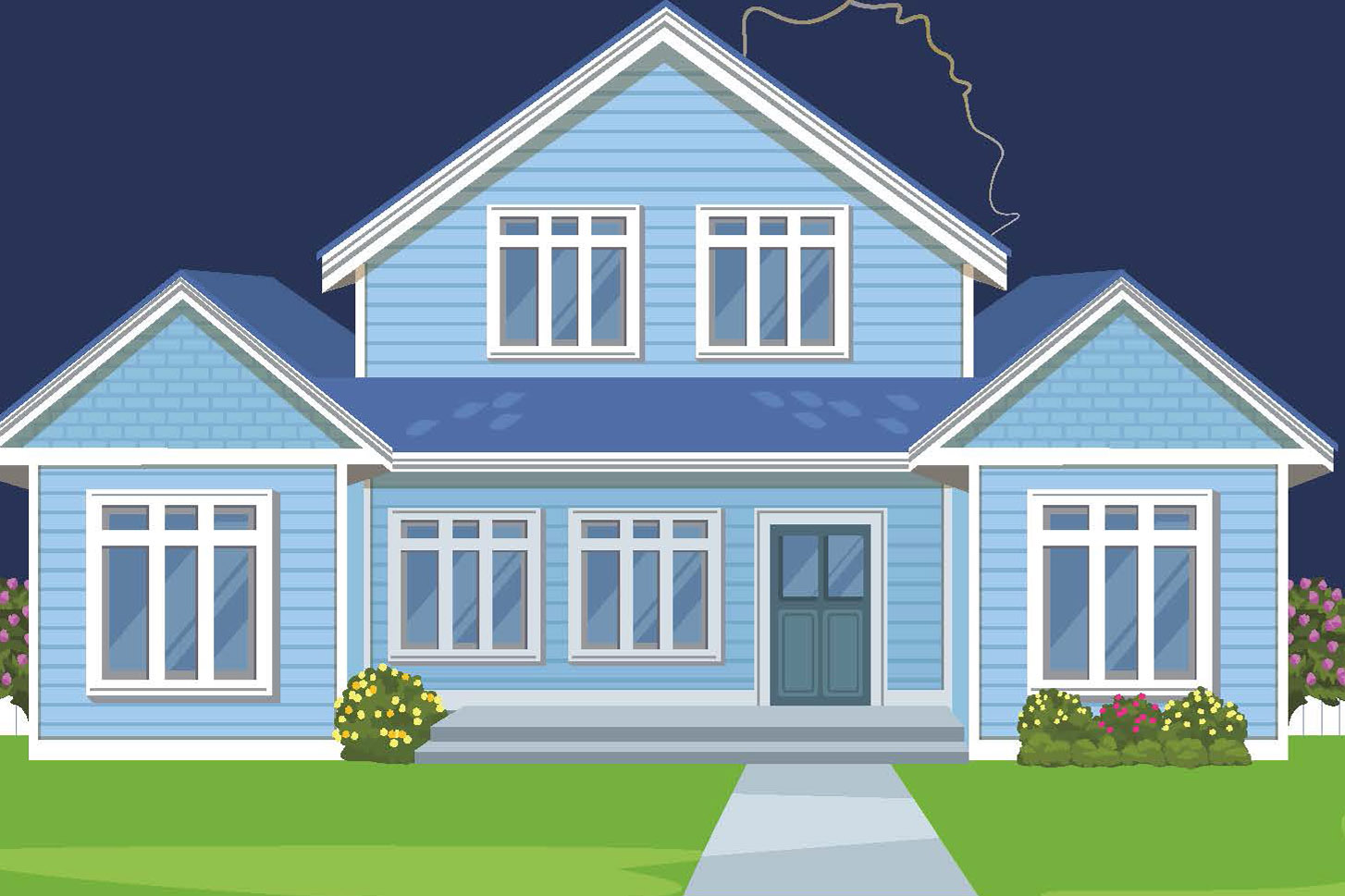
One homeowner busts the myths surrounding the American dream.
I have been a proud homeowner since 2006, when my wife and I agreed to let a very large bank own a house that we could live in so long as we paid them a lot of money. Flush with cash, thanks to selling our condo during the height of “the bubble,” we entered into homeownership with just enough equity to survive the investable bursting of said bubble just a few years later.
We survived the economic downturn with our heads mostly above water, despite the best efforts of our house to drain our savings. For example, one evening our home decided to attract a very large and expensive bolt of lightning into its various electrical components. I naively thought that the insurance I paid for every month would come in handy in this kind of situation but was crestfallen to discover that insurance isn’t actually that kind of business.
Instead, the very nice man at the very large faceless insurance corporation assured me that it was in my best interest to pay for the damages myself. He assured me that if I allowed my insurance company to pay for the damages, they would need to start charging me more to not help me.
The point is, homeownership has its challenges, and I won’t even go into DIY projects. Right now, that seems to be truer than ever. While we seem to have learned from the mistakes of the bubble, we can all agree that home prices have been acting suspiciously bubbly lately. And some insurance companies have stepped up their game by not even offering the kind of protections they used to. Meanwhile, literally one or two wizards actually know what’s going on with our tax bills. It’s a mess, frankly. So, I decided I’d go straight to the experts for answers.
Let’s start with what’s happening to home values. Even before the pandemic began, we were seeing a steady influx of new residents in our region from areas like the Midwest and the Northeast. That was nothing new on Hilton Head Island, but it was a growing trend across the Carolinas and into Florida. With the pandemic, however, that interest exploded.
And with greater demand came lighter supply, pushing prices higher.
And then the pandemic ended (probably). But housing prices continued to climb around here, rising 15.2 percent year-over-year in Beaufort County. I asked Daniel Moskowitz, broker-in-charge at Dunes Real Estate, why that might be.

Daniel Moskowitz, broker-in-charge at Dunes Real Estate
“Today, there are two factors fostering market conditions. These are demand and affordability, with supply being more of an outcome of the latter,” he said, noting that the influx of new interest broadened our local market’s appeal, creating its own effects. “This expanded market appeal, coupled with the last decade of wealth amassed among the retiring baby boomer generation, has delivered an affordability influence that has sustained the price pace of the local post-pandemic market for longer than most other U.S. locales.”
So, the market continues apace as if there were still a pandemic going, which has kept prices high. In and of itself, this tends to correct a market.
“Higher prices today remain the correction of the new profile of demand, but we cannot ignore the pressures from increasing carrying costs,” Moskowitz said. “In my near two decades of real estate experience in our market, I have been most surprised and saddened to encounter a number of our second-home property owners exiting because of the dramatic increase cost challenge to affordability.”
That cost challenge, Moskowitz noted, is amplified by owners of second homes seeing declining post-pandemic rental revenue from its ’21-’22 peak. That, coupled with rising insurance rates, suddenly makes that investment property less lucrative for second-home owners looking to cover their mortgage. This is especially true in the villa market.
“Pre-pandemic property owners that align closer to the ‘return on investment’ purist find today’s 30-50 percent increase in rental revenue over 2019’s to not warrant the near doubling of monthly carrying costs over the same time,” Moskowitz said. “This is the most common catalyst for a seller to enter the market at this time, which has been offset by the new buyer who holds a greater value for personal use.”
So, what is it about this calendar year that made it suddenly so much more expensive to own a home?
Well, insurance, for one thing.
“I’ve been in the business for 30 plus years, and I’ve never seen it this bad,” said Steven Stauffer, managing executive/vice president with McGriff Insurance. “In 2022, we had 15 separate billion-dollar events across the United States, the last one being Ian, which was a 70-something-billion-dollar storm. And when you consider what happened the year before, and the string of bad years before that, everything kind of came home to roost this year. Everybody pays for it. But a worse issue came when carriers started pulling out and shrinking their capacity.”
Insurance is a global business, and even if we’ve had a relatively light storm season, there have been hailstorms in the Midwest, wildfires in Hawaii, and several other natural disasters that have driven rates skyward. These external disasters carry a price tag that we all pay for. Stauffer pointed to one Hilton Head Island home he was aware of whose cost to insure recently went up nearly 60 percent. And that’s par for the course in our area.
He does have good news, however. Sort of.
“I think if we can get through this year and not really have any bad hurricanes, we’re not going to see rates go down next year,” he said. “But you’re not going to see those huge increases like we took this year.”
So when can we expect rates to go down?
“I’ve seen hard markets before; it’ll eventually turn and go the other way,” Stauffer said. “You’re already starting to see carriers wanting to come back in now, because they think they can get their rate…. I don’t think the rates are going to change. But that’s just the start. Typically, hard markets last a year or two. This one’s probably going to be at least three, and we’re in year one.”
So, we have a couple more years to go. In the meantime, we can only hope that rates go down across the board, home prices reach some kind of equilibrium, and we can all feel a little more comfortable in our own homes. So long as there aren’t any more storms. My house can’t handle any more lightning.


